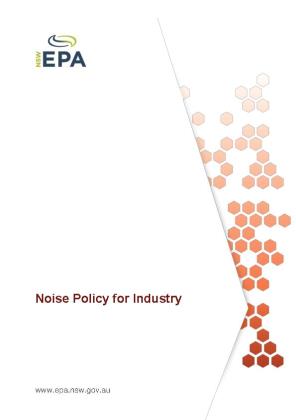The policy can be used by:
- the EPA when undertaking its regulatory responsibilities under the Protection of the Environment Operations Act 1997 (POEO Act)
- large industrial and agricultural premises like mines, quarries and waste facilities that require an environment protection licence from the EPA under the POEO Act
- the Department of Planning and Environment when assessing major development proposals under the Environmental Planning and Assessment Act 1979
- local councils for assistance with their planning and regulatory responsibilities
- community members wishing to find out more about ways in which noise is assessed and measured.
Find out more about how the policy will be used.
When the Noise Policy for Industry (2017) applies
This policy replaces the NSW Industrial Noise Policy (2000) when assessing noise from:
- all new developments
- existing premises that need to vary their licence or modify their consent conditions under certain circumstances.
The NSW Industrial Noise Policy still applies when assessing noise from existing developments that have licence or consent conditions that refer to that policy.
About the Noise Policy for Industry (2017)
The Noise Policy for Industry was developed following a review of the NSW Industrial Noise Policy and using input from public consultation on proposed policy amendments.
The Response to submissions contains more information on the views of policy users in the development of the policy.
How the Noise Policy for Industry (2017) differs from the NSW Industrial Noise Policy (2000)
Some key changes in the Noise Policy for Industry (2017) include:
- clarifying ways in which the EPA considers noise levels when developing site-specific requirements
- adjusting the minimum daytime noise level to 40 decibels; night-time and evening noise levels have not changed
- incorporating sleep disturbance assessment levels based on World Health Organization guidance
- amending the way meteorological conditions are considered to ensure that noise requirements apply under all conditions
- updating methods for identifying and assessing annoying noise characteristics, for example, tonal and low-frequency noise, to reflect current standards and practices
- introducing a ‘precinct’ concept to better manage noise and impacts from multiple premises at one site.
More information
The purpose of the Noise Policy for Industry is to ensure noise impacts associated with industrial developments are evaluated and managed in a consistent and transparent manner.
The following publications clarify certain implementation aspects of the Policy to inform, educate and enable acoustic practitioners and the regulated community understand the EPA’s expectations. The publications are available for free view on “Springer Link” simply by hitting the relevant topic link below and then downloading the pdf located on the right side of the Springer Link screen. The publications are contained in the “Acoustics Forum” section of the downloaded document.
- What the NSW EPA Considers when Developing Noise Conditions for Activities Assessed using the Noise Policy for Industry Acoustics Australia Vol. 51, No. 2, June 2023
- These Acoustics Forum publications are available in the Australian Acoustical Society's journal Acoustics Australia Vol. 50, No. 3, September 2022.
- Determining The Noise Policy For Industry Noise Amenity Category For Residential Receivers. pages 278-282
This publication clarifies how to assign noise amenity categories to receivers when assessing noise under the NPfI. - How To Apply The Noise Policy For Industry Intermittent Modifying Factor Correction. pages 283-284
This publication provides guidance on applying the ‘intermittent’ modifying factor correction in the NPfI.
- Determining The Noise Policy For Industry Noise Amenity Category For Residential Receivers. pages 278-282
- An example approach to consider low frequency noise in the context of the NSW noise policy for industry. Acoustics Australia Vol. 48, No. 2, August 2020, pages 170-172
This publication outlines an example approach for the assessment of low frequency noise.
- See frequently asked questions about the noise policy for industry.


